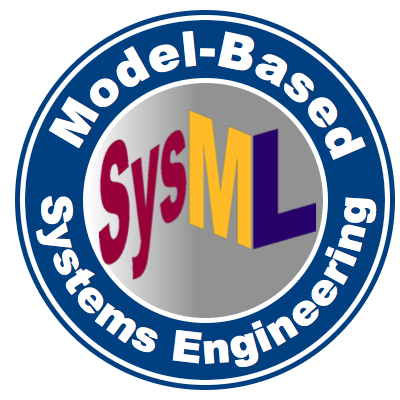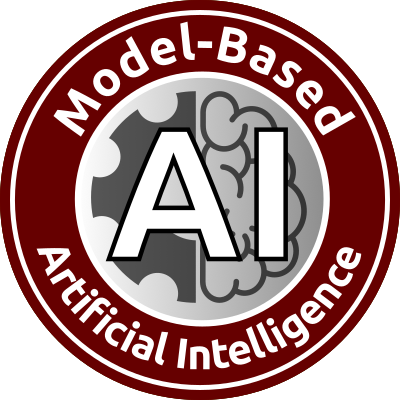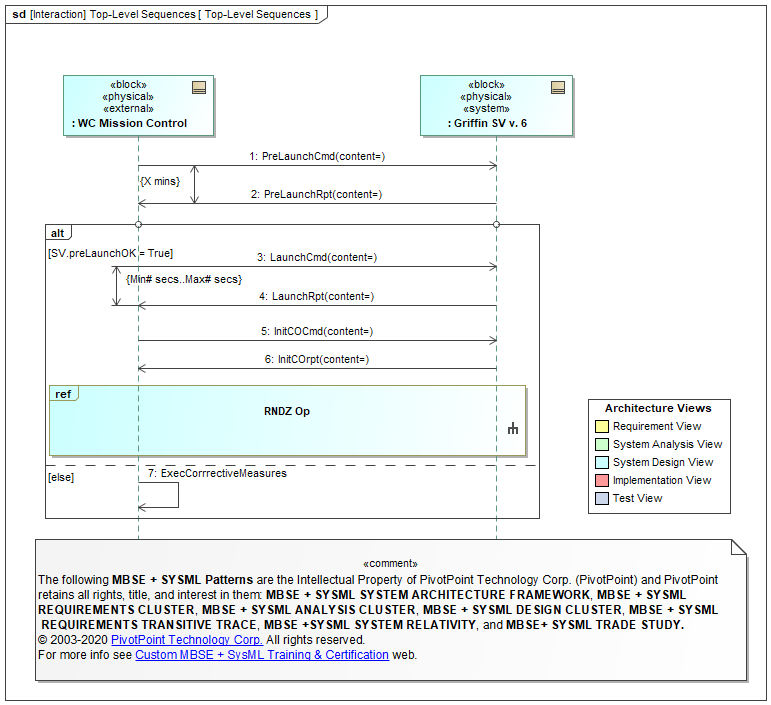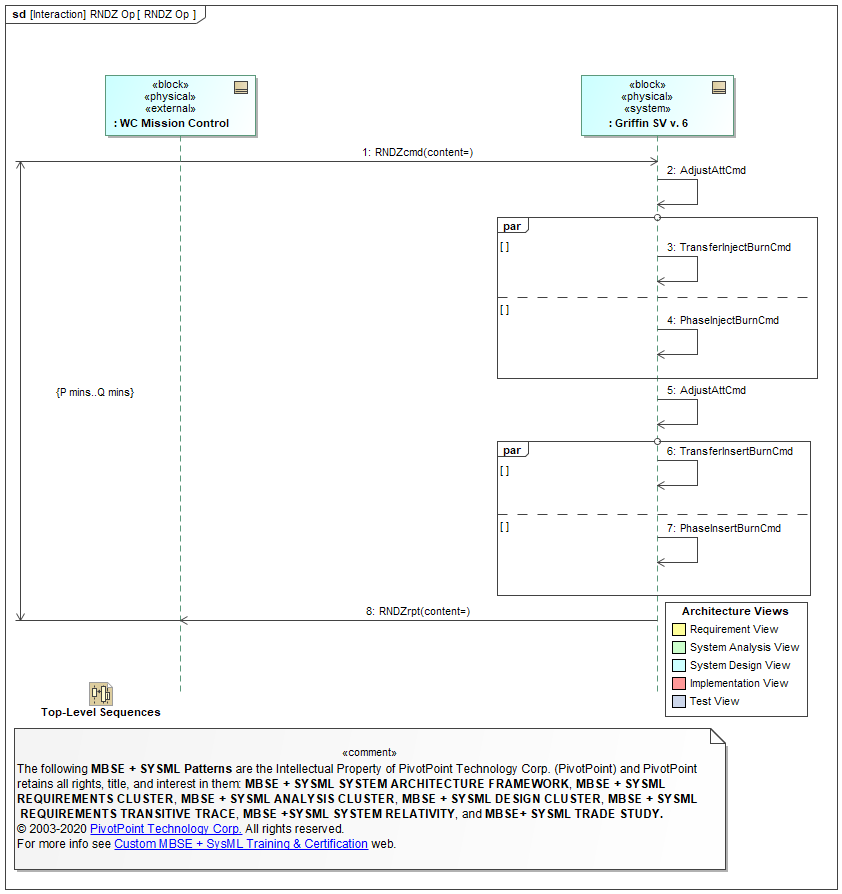SysML FAQ: What is a Sequence diagram (SD) and how is it used?
What is a SysML Sequence diagram?
Definitions
Message: A Message (notation: arrow) represents communication from one object to another, with the expectation that a useful behavior will ensue. Messages may be synchronous (notation: open arrowhead) or asynchronous (notation: black-triangle arrowhead).
Sequence diagram (sd): A Sequence diagram is a dynamic behavioral diagram that shows interactions (collaborations) among distributed objects or services via sequences of messages exchanged, along with corresponding (optional) events.
- collaborating objects or services are Parts depicted as Lifelines (notation: rectangle with a dashed vertical line below)
- Combined Fragment operators support recursive nesting and Turing Complete semantics (Alternative [alt], Optional [opt], Parallel [par], Loop [loop], etc.)
- compare and contrast: Message Sequence Charts (MSCs).
Purpose
The purpose of Sequence diagrams is to specify dynamic system behaviors as message-passing collaborations among prototypical Blocks (Parts). When properly applied (See Usage Notes below) Activity diagrams are recursively scalable and simulatable.
Diagram Properties
| Diagram Name | Diagram Type | UML 2 Analog | SDLC Usage | Essential AGILE SYSML? |
Dynamic Sim † |
Math Sim ‡ |
Auto Code Gen |
Rigor | Semi | Informal |
|---|---|---|---|---|---|---|---|---|---|---|
| Sequence diagram (seq) | Dynamic Behavior [Simulatable] |
Sequence | System Design | |||||||
Usage Notes
| BEST PRACTICE PATTERNS | ANTI-PATTERNS |
|---|---|
| * Recursively decompose ("nest") Sequence diagrams by using Combined Fragement References (denoted by ref label). | * Define Messages as strings instead of reusing Block and Interface Operations and Signals. |
UML, BPMN, OMG SYSML and UPDM are trademarks of the Object Management Group.
TOGAF and ARCHIMATE are trademarks of The Open Group.
ENTERPRISE ARCHITECT is a trademark of Sparx Systems Pty Ltd. MAGICDRAW and CAMEO are trademarks of No Magic, Inc. RATIONAL RHAPSODY is a trademark of IBM.
All other trademarks are the property of their respective owners.
TOGAF and ARCHIMATE are trademarks of The Open Group.
ENTERPRISE ARCHITECT is a trademark of Sparx Systems Pty Ltd. MAGICDRAW and CAMEO are trademarks of No Magic, Inc. RATIONAL RHAPSODY is a trademark of IBM.
All other trademarks are the property of their respective owners.
© 2003-2024 PivotPoint Technology Corp. | Privacy | Contact Us



